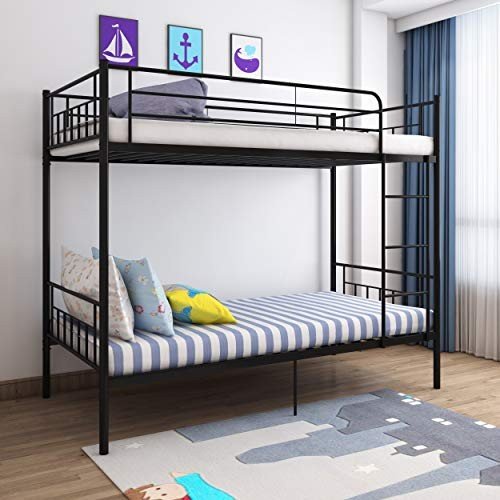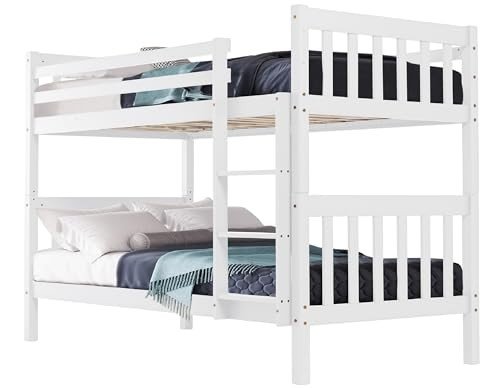
Sale Bunk Bed
Add a review FollowOverview
-
Founded Date July 31, 1979
-
Sectors Customer Service / Call Center
-
Posted Jobs 0
-
Viewed 22
Company Description
Bunk Beds Explained In Fewer Than 140 Characters
Exploring Bunk Beds: A Comprehensive Guide
Bunk beds have actually long been a staple in kids’s bedrooms, Bunkbedsstore.top dorm rooms, and even homes with limited space. Not just do they provide a useful sleeping solution, but they also develop a fun and imaginative environment for kids and a great space-saver for adults and families. This short article will explore everything you need to understand about bunk beds, from types and products to security suggestions and purchasing suggestions.
Table of Contents
- Types of Bunk Beds
- Conventional Bunk Beds
- Loft Beds
- Triple Bunk Beds
- L-Shaped Bunk Beds
- Material Options
- Wood
- Metal
- Safety Considerations
- Purchasing Guide
- Frequently asked questions
Kinds Of Bunk Beds
Bunk beds come in numerous styles to match different needs and choices. Here’s a breakdown of the most common types:

Conventional Bunk Beds
Conventional bunks typically feature two beds stacked vertically on top of one another. These beds are ideal for brother or sisters sharing a room or for making the most of sleeping space in visitor spaces.
Loft Beds
Loft beds stand similarly to conventional bunk beds but do not have a lower sleeping area. Rather, they often include a desk or seating location underneath, making them a great option for little spaces requiring multifunctionality.
Triple Bunk Beds
Triple bunk beds are developed for 3 residents, with beds stacked in a three-tier configuration. These are less typical however can be a fun solution for big households or sleepovers.
L-Shaped Bunk Beds
With one bed placed horizontally and the other vertically, L-shaped bunk beds are frequently geared up with extra functions such as desks or storage drawers and can match corner spaces in a room.
Comparison of Bunk Bed Types
| Bed Type | Ideal Use | Description |
|---|---|---|
| Standard | Shared bedrooms or guest spaces | Two beds stacked vertically |
| Loft | Small spaces requiring multi-purpose space | Upper bed with open space underneath |
| Triple | Big families or sleepovers | Three beds stacked vertically |
| L-Shaped | Corner or flexible areas | A combination of vertical and horizontal beds |
Material Options
Bunk beds are made from different products, with wood and metal being the most typical. Each material has its benefits and drawbacks.
Wood
- Durability: Generally robust and can hold up against years of usage.
- Aesthetic Appeal: Offers a classic appearance that can mix with different decorations.
- Weight Capacity: Typically stronger; can support much heavier weights.
- Disadvantages: May be more costly than metal choices and can be vulnerable to scratches.
Metal
- Sturdiness: Generally light-weight and simple to move but still strong.
- Modern Design: Often can be found in sleek styles, making it appealing for contemporary areas.
- Cost-efficient: Usually less costly than wooden alternatives.
- Downsides: Can be cold to the touch in winters and might not have the exact same visual appeal for some buyers.
Security Considerations
When it comes to bunk beds, security can not be ignored. Here are crucial safety ideas to bear in mind:
- Guardrails: Ensure that the leading bunk has guardrails on both sides to prevent falls.
- Sturdy Construction: Check for a strong develop and sturdy products to hold up against weight and movement.
- Weight Limit: Adhere to the manufacturer’s weight limit for both the upper and lower bunks.
- Ladder Design: Choose bunks with a safe, easy-to-climb ladder and avoid any sharp edges or rungs.
- Age Restrictions: Most producers advise that children under the age of six should not oversleep the upper bunk.
Buying Guide
When searching for bunk beds, think about the list below factors to find the best fit for your needs:
- Space Availability: Measure the room size and ceiling height, ensuring there is sufficient space for the top bunk.
- Bed Size: Decide in between twin, full, or larger sizes based on your requirements and the size of the space.
- Design Preference: Consider the total design of the bed room to find an appropriate design.
- Relieve of Setup: Look for a bunk bed that is uncomplicated to assemble.
- Budget plan: Bunk beds can be found in numerous rate varieties, so determine a budget plan before beginning your search.
FAQs
1. What is the suggested age for children to sleep on the top bunk?
Kids aged six and older are normally recommended to sleep on the leading bunk to decrease the risk of falls.

2. How can I make my bunk bed much safer?
To boost safety, make sure guardrails are correctly installed and examine that the bed is put on a flat surface area. In addition, encourage children to utilize the ladder carefully.
3. Can I convert a bunk bed into two separate beds?
Many bunk beds are developed to be convertible. Examine the manufacturer’s specs for convertibility features.
4. What accessories are readily available for bunk beds?
Common accessories include bed linens, storage drawers, staircases instead of ladders, and tented canopies for an enjoyable visual appeal.
5. How do I keep my bunk bed?
Regular checks for loose screws or structural stability can assist ensure security. Dust the bed frequently and tidy spills promptly to keep the products in good condition.
Bunk beds are flexible and a space-efficient option for various living situations, from children’s rooms to visitor accommodations. With numerous styles and products readily available, prospective purchasers have a wealth of alternatives to consider, making sure a mix of practicality and aesthetic appeals. By prioritizing safety and following the tips outlined in this guide, individuals can discover the best bunk bed that matches their space and lifestyle, all while creating a satisfying sleeping environment.
